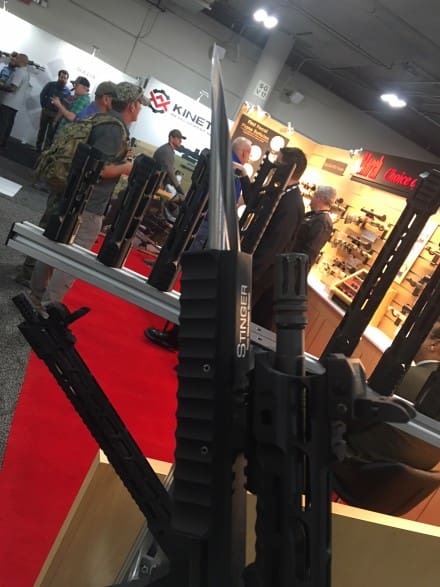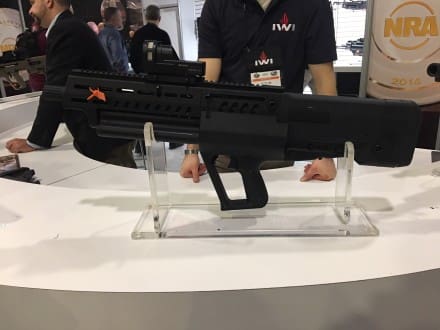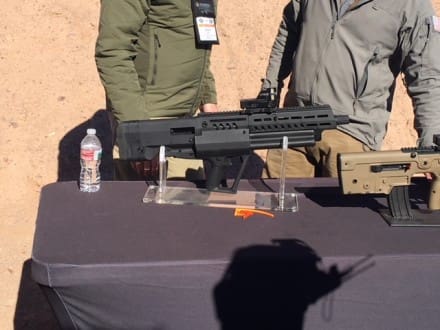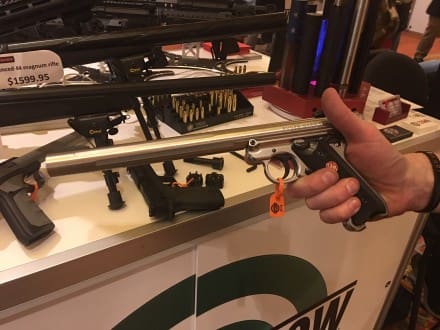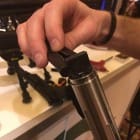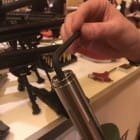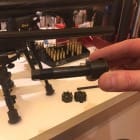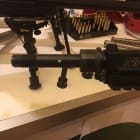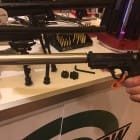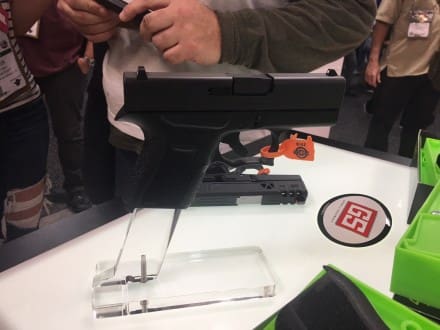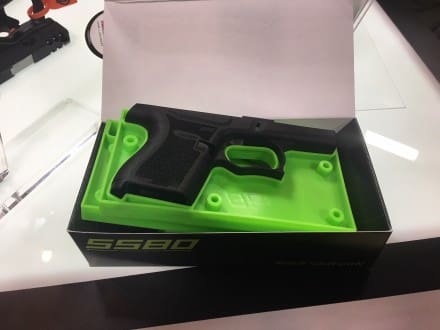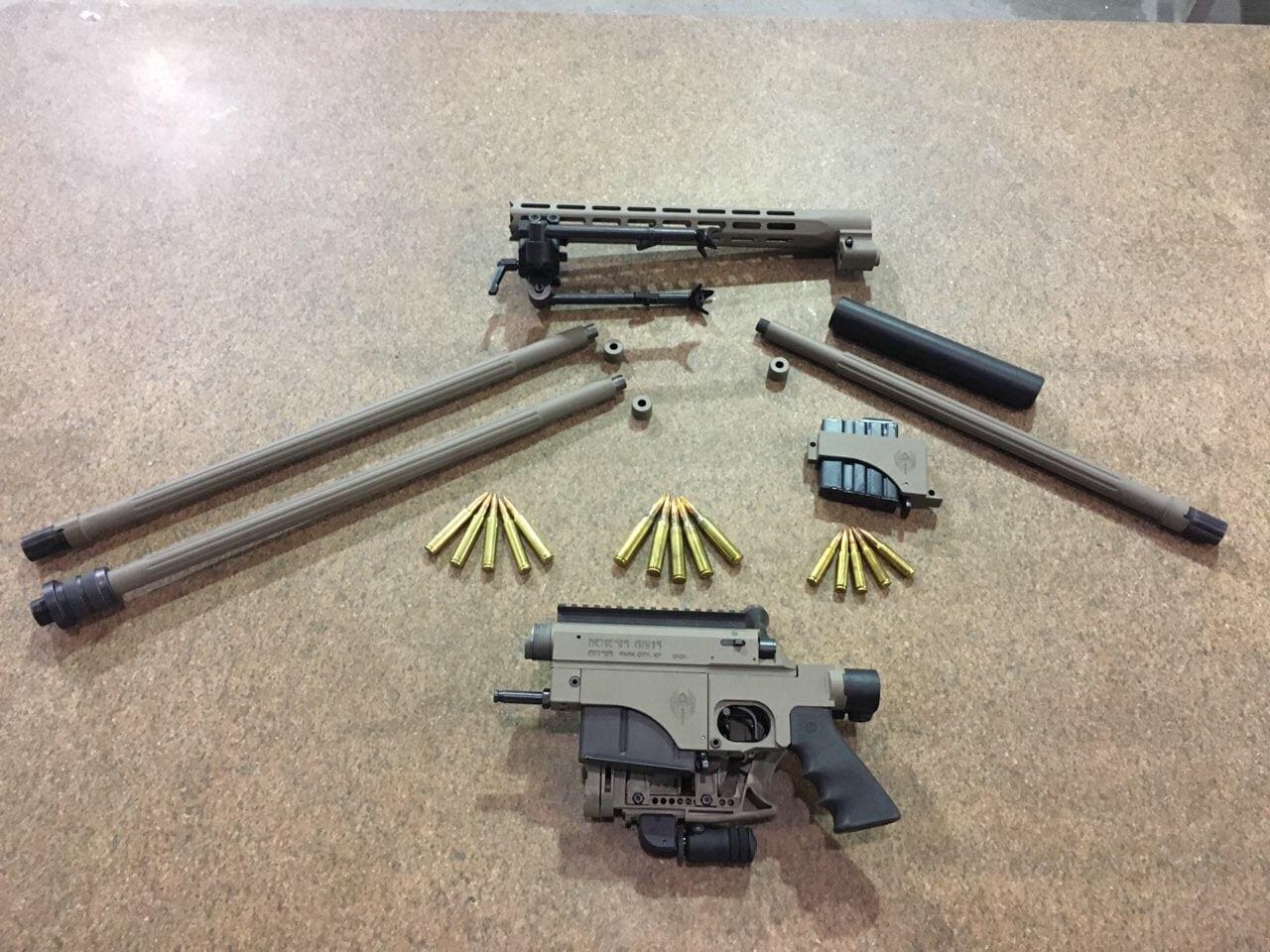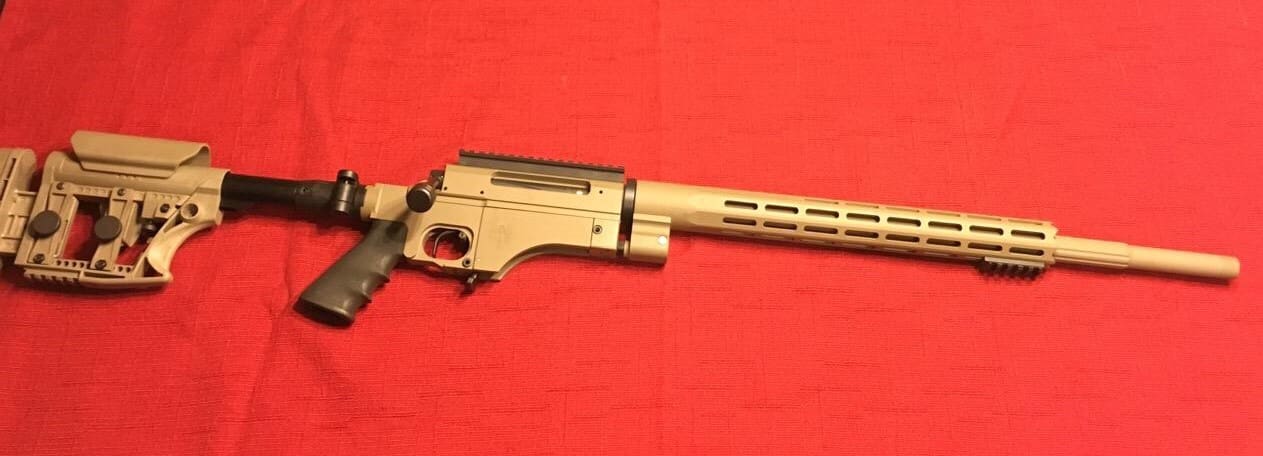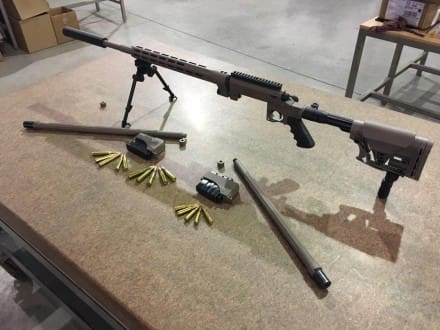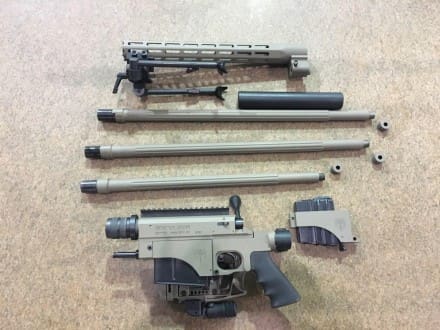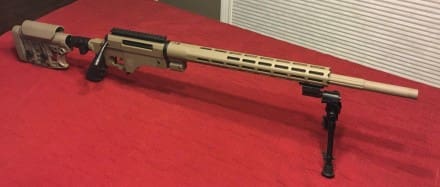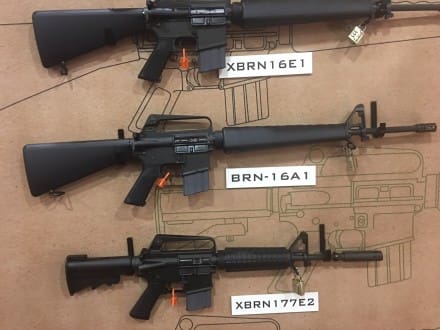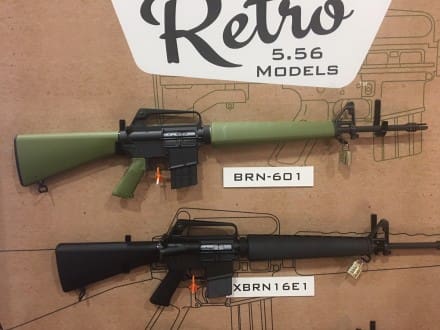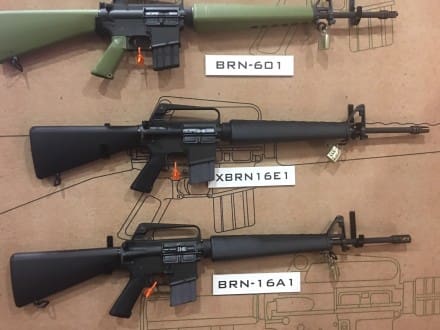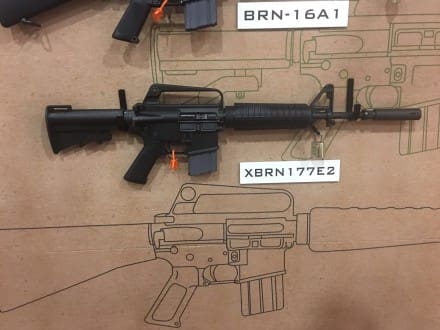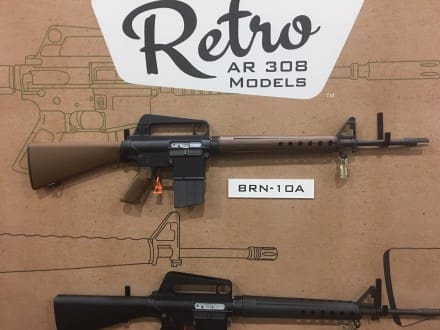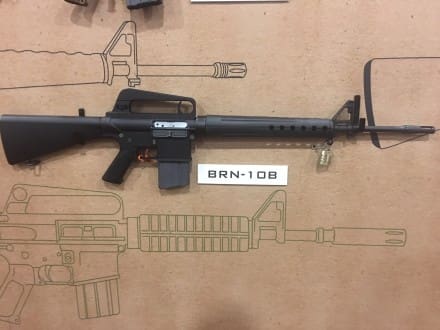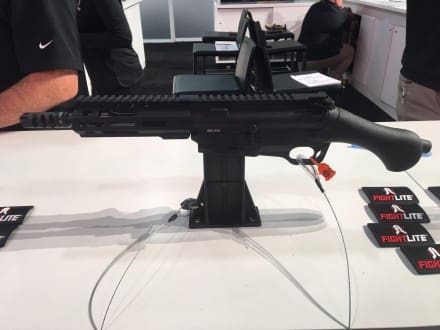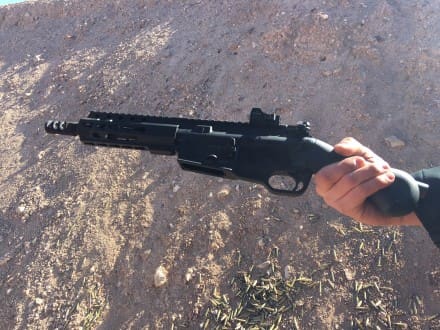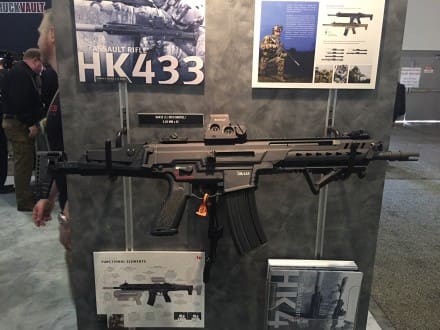
The HK433 is a modular assault rifle in development by H&K, which is currently undergoing evaluation with the Bundeswehr to replace the G36 as Germany’s new service rifle. This particular model shown at the show was revealed by a rep to be a 4th iteration prototype, and we were told that it’s expected that several more prototype iterations will be made before the design is finalized.
Getting to the details of the rifle, the HK433 is a lightweight, gas operated rifle chambered for the NATO standard 5.56x45mm cartridge. It features a flat, non-reciprocating charging handle, with toolless conversion for left and right-handed shooters. The standard handguard has HKey attachment interfaces at the 3 and 9 o’clock positions, with a Picatinny rail at the 6 o’clock position, although HK notes there’s an M-LOK interface handguard that will also be offered. A monolithic sight rail along the top of the weapon allows for the attachment of red dot sights, scopes, and other optics.
The lower receiver is ambidextrous and exchangeable for either a G36 or HK416 style magazine release; the model at the show was set up with the G36 paddle release. The HK433 is capable of semi-auto and full-auto fire, with a 45 degree safety lever that can be engaged in either cocked or storage condition. The HK433 features a foldable buttstock with height-adjustable cheek rest that is also retractable to 5 different positions. The entire weapon is designed for tool-free disassembly with the major assemblies held together with captive pins. Interestingly, the receiver features a maintenance-free round counter, which also stores info on the serial number, weapon type, year of manufacture, and more, which can be read with RFID technology.
Multiple barrel lengths will be offered for the HK433, from 11″ to 20″, and the gas port will be fully adjustable without the use of tools.
The HK433 will be offered in Black and Flat Dark Earth.
hk-usa.com


